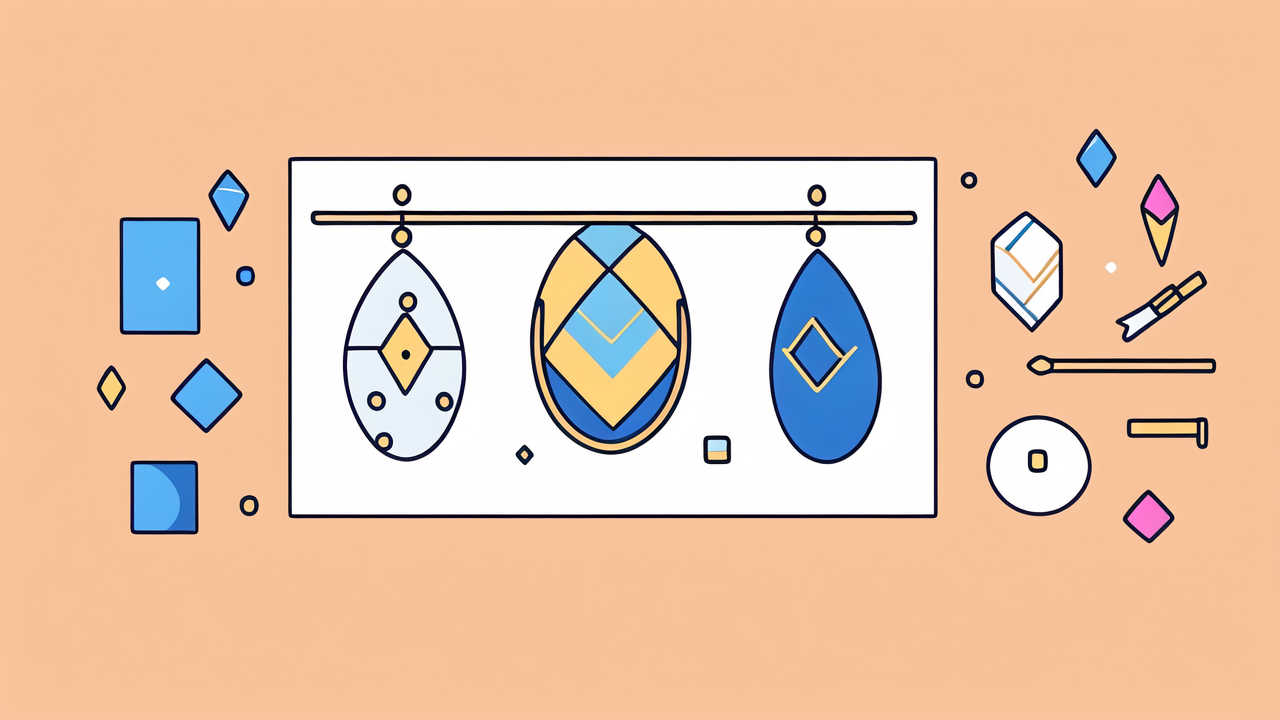Understanding the Basics of Custom Jewelry
What is Custom Jewelry?
Custom jewelry is unique pieces made just for you. It's not mass-produced. Each item is crafted to your exact wishes. You can design from scratch or change existing styles. Custom jewelry lets you choose every detail. This includes the metal, gems, and overall design. You can create anything from rings to necklaces. Even simple items like hoop earrings can be customized. The goal is to make jewelry that's truly one-of-a-kind. It's about having something no one else owns. Custom jewelry shows your personal style. It can express who you are through accessories. You work closely with a jeweler to bring your ideas to life. The result is a piece that fits you perfectly, both in style and size. Custom jewelry can also solve fit issues. It ensures your piece is comfortable and suits your body shape.

The Significance of Personalization in Jewelry
Personalized jewelry holds special meaning. It's more than just a pretty accessory. These pieces often tell a story. They can mark important life events. Or they might represent personal values. Custom jewelry allows for self-expression. It lets you wear your personality for all to see. Personal touches make jewelry more than decoration. They become cherished keepsakes. This personal approach makes wearing jewelry more enjoyable. It creates a deeper connection between you and your pieces. Personalized jewelry can be conversation starters. It can remind you of special moments or people. The meaning behind the piece adds to its value. It's not just about the materials used, but the story they tell. Customized jewelry can also be a thoughtful gift. It shows you've put extra care into choosing something special.
Key Terms in Jewelry Customization
Understanding key terms helps in the customization process. Here's a list of important ones:
- Setting: How gems are secured in the jewelry
- Carat: Measure of gem weight
- Karat: Purity measure for gold
- Prong: Metal pieces that hold gems in place
- Bezel: A rim that surrounds and holds a gem
- Pavé: Many small gems set closely together
- Engraving: Adding text or designs to metal
- Casting: Pouring molten metal into a mold
- Filigree: Delicate metalwork resembling lace
- Milgrain: Tiny beaded detail on metal edges
Knowing these terms helps you communicate your vision clearly. It makes the customization process smoother. You can better explain what you want. And you'll understand the jeweler's suggestions too. This knowledge helps you make informed decisions about your custom piece.
Step-by-Step Guide to Designing Your Custom Pieces
Conceptualizing Your Design
Start by gathering inspiration. Look at jewelry you like. Think about styles that suit you. Consider the purpose of the piece. Is it for daily wear or special occasions? Sketch your ideas if you can. Don't worry if they're not perfect. They just help convey your thoughts. Think about symbols or motifs that matter to you. Consider how the piece will fit with your existing jewelry. Look at current trends, but don't be bound by them. Your custom piece should reflect your personal style. Write down key features you want. This could be specific gems, metals, or designs. Be open to suggestions from jewelers too. They can offer valuable insights. Think about the story you want your jewelry to tell. What feelings do you want it to express? Be creative and don't limit yourself at this stage. Your final design might surprise you in a good way.

Selecting Materials and Styles
Choosing materials is a crucial step in customization. Think about durability and maintenance. Gold is classic but comes in different purities. Silver is affordable but may tarnish. Platinum is durable but pricey. For gems, consider hardness and color. Diamonds are tough and versatile. Softer stones need more care. Think about your lifestyle when choosing. Active people might prefer sturdy designs. For style, consider your wardrobe and other jewelry. Do you prefer vintage or modern looks? Minimalist or ornate? Think about how often you'll wear the piece. This can influence material choices. Don't forget about comfort, especially for rings and earrings. Discuss options with your jeweler. They can suggest materials that fit your needs and budget. Consider the long-term too. Some materials age better than others. Your jeweler can explain the pros and cons of each choice.
The Role of Craftsmanship and Artistry
Craftsmanship is key in custom jewelry. It's what sets custom pieces apart. Good craftsmanship ensures durability and beauty. Look for jewelers with proven skills. Ask to see examples of their work. Artistry brings your vision to life. It adds that special touch to your piece. A skilled artisan can suggest design improvements. They know how to make a piece both beautiful and wearable. Discuss the creation process with your jeweler. Understanding their techniques can help you appreciate the work. Good craftsmanship often involves hand-finishing. This gives pieces a superior look and feel. Remember, quality work takes time. Don't rush the process. The result will be worth the wait. A true artist can take your idea and elevate it. They balance your vision with what works well in jewelry. The right craftsperson turns a concept into a masterpiece.
Navigating the Market: Tips and Best Practices in the United States
Identifying Reputable Custom Jewelers
Finding a good custom jeweler is crucial. Start by asking for recommendations. Friends or family might know someone reliable. Look for jewelers with positive online reviews. Check their credentials and certifications. See if they're members of professional associations. These often have ethical standards. Visit their store or workshop if possible. This gives you a sense of their work environment. Look at their portfolio of custom work. It should show range and quality. Ask about their design process. A good jeweler will be happy to explain. Consider their communication style. You want someone who listens to your ideas. They should be able to offer clear advice. Don't be afraid to ask questions. A reputable jeweler will answer them patiently. Look for someone who's passionate about their craft. They should be excited to work on your unique piece.

How to Ensure Quality in Your Custom Pieces
Ensuring quality in custom jewelry takes some effort. First, understand what quality means in jewelry. This includes material purity, craftsmanship, and design. Ask about the sourcing of materials. Reputable jewelers use ethically sourced gems and metals. Discuss the manufacturing process. Quality pieces often involve hand-finishing. Ask for certification for precious stones. This verifies their authenticity and quality. Inspect the piece carefully when it's done. Look for even settings and smooth finishes. Check that stones are secure. Ask about warranties or guarantees. These show the jeweler's confidence in their work. Don't hesitate to ask for changes if needed. A good jeweler will want you to be satisfied. Remember, quality often comes at a higher price. But it's worth it for a piece that lasts. Ask about care instructions too. This helps keep your jewelry looking great. If something seems off, speak up. A reputable jeweler will address your concerns promptly.
Legal Considerations When Buying Custom Jewelry
When buying custom jewelry, there are legal points to consider. Always get a detailed written agreement. This should outline the design, materials, and price. It should also include the timeline for completion. Make sure you understand the return policy. Custom pieces often can't be returned. But there might be exceptions for quality issues. Ask about insurance during the creation process. Find out who's responsible if something goes wrong. Understand the warranty terms. These can vary widely between jewelers. If using precious stones, ask for certificates. These prove the authenticity and quality of the gems. Be clear about copyright for custom designs. Usually, you own the design you commission. But clarify this with your jeweler. Keep all receipts and documentation. These are important for insurance and resale. If in doubt about any terms, consult a lawyer. It's better to be safe when making a significant purchase. Make sure everything is clear before you start. This protects both you and the jeweler.






